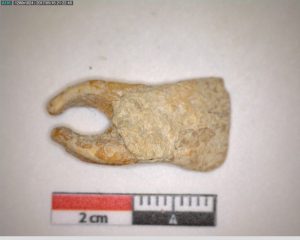Carolyn Freiwald
Biography | Research | Student Projects | Publications | Freiwald CV
Check out projects on http://carolynfreiwaldlab.com
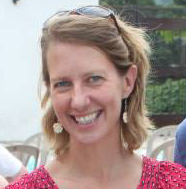
Office Hours
By appointment
Courses
Anth 101 Introduction to Anthropology
Anth 304 Biological Anthropology
Anth 320 Archaeozoology: Animal Use in History
Anth 326 Archaeology of Maya Civilization
Anth 351 Human Mobility: Studies in Migration
Anth 405 Bone Detectives I: Human Osteology/Anth 630 advanced Human Osteology
Anth 607 Seminar in Bicultural Anthropology
Anth 609 Seminar in Research Design and Methodology
Anth 604/605 Graduate Professional Development Seminars
Anth 344 Archaeological Science: Stones to Drones
Biography
I earned my PhD and MS at the University of Wisconsin-Madison Department of Anthropology, entering graduate school after studying History and International Relations in the great Badger State. Historic architecture – old buildings and ruins – have always fascinated me, so the allure of 19th century buildings eventually turned my curiosity about the past into a job where I get to solve mysteries about ancient people every day. I study ancient Latin American civilizations and have ongoing research projects in Mexico, Guatemala, Belize, and Honduras, though I have also worked on archaeology projects in the Dominican Republic, Nicaragua, Panama, Romania, Denmark, and the Upper Midwest and Mississippi.
Research
Biogeochemistry provides a unique way to reconstruct ancient migration patterns and understand the lives of ancient migrants. Strontium and oxygen isotopes values in the tooth enamel of people who lived in Belize 1300 years ago show that population movement was common, and that migrants included men, women, and children living in urban and rural communities. The UM archaeology lab collaborates with the Forensic Chemistry Program to study migration and diet from Central Mexico to Honduras. My specialty is to create detailed maps of isotope values region by region, and site by site, so that we can better understand migration networks among the ancient Maya and neighboring populations. I also look at more specific questions: did the Maya practice of notching, filing, and placing precious stones like jade in their teeth relate to migration? Did migrants receive different burial treatment than people born in the community? I work with teams of researchers to examine funerary practices in ancestor shrines in and around houses in the Belize Valley, as well as interments in caves and rock shelters in the region, to better understand burial treatment and how it related to origin and an individual’s identity.
Read about it here: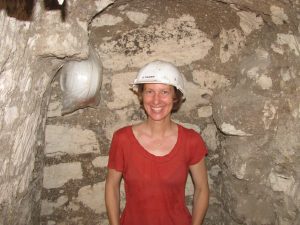 go.ted.com/carolynfreiwald
go.ted.com/carolynfreiwald
I also study ancient diet and conduct research on animal use in the Petén Lakes region in northern Guatemala. My current zooarchaeological studies at the site of Ucanal with the Proyecto Arqueológico Ucanal explore the meaning of animal burials, including large male dogs and a duck whose feathers were plucked before it died. The use of other animals varied during the Terminal Classic period, including turtles, deer, dogs-and humans-used to make perforators and other bone tools and ornaments. My current research in the Postclassic period includes Nixtun Ch’ich’, where fishes and lake resources were important, and how that changed during the Colonial at the nearby mission San Bernabé when domesticated species were introduced. My colleagues and I also use bone chemistry to study where animals were acquired, including the first cows, pigs, and horses in the region. Other research projects on animal use include research on canids (wolves and coyotes) in the Upper Midwest and with faunal collections in North America, Denmark, and the Galapagos islands (as a collaborative effort with the UW-Madison Zoological Museum).
Student Projects
I advise students seeking Master’s and undergraduate degrees, including human osteology, zooarchaeology, and archaeological chemistry. I have projects in the US, Guatemala, and Belize and am happy to talk wit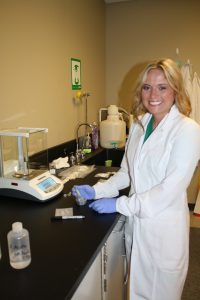 h prospective students about their ideas and interests. Current student research topics include isotopic migration to Ambergis Caye, Belize, bone tool production at Ucanal, Guatemala, ‘dirt’ eating in Zambia and the US South, and diet and mobility at Chicoloapan, Central Mexico.
h prospective students about their ideas and interests. Current student research topics include isotopic migration to Ambergis Caye, Belize, bone tool production at Ucanal, Guatemala, ‘dirt’ eating in Zambia and the US South, and diet and mobility at Chicoloapan, Central Mexico.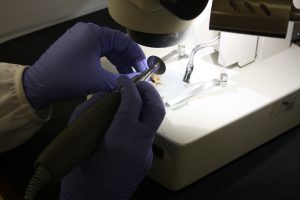
Publications (select, see CV)
2023. Freiwald, C. “Oxygen Isotope Values in the Maya Region.” In Isotopic Proveniencing and Mobility: The Current State of Research, pp. 67-84. Cham: Springer International Publishing.
2023. McNeil, C, E Barrios, O Gómez, C Freiwald, M Díaz, N Meissner, M Colin. 2023. Hablando con los dioses: analizando las ofrendas de la plaza de los siete templos y del sur de Tikal. In Simposio de investigaciones arqueológicas en Guatemala, pp. 63-78. Instituto de Antropología e Historia, Asociación Tikal.
2023. Yaeger, J, C Helmke, MK Brown, M Zender, B Cap, and C Freiwald. “A Shell Gorget from Feature 384-2 at Buenavista del Cayo, Belize.” Mexicon 45, no. 2.
2022. Freiwald, C, J Belanich, A Rand. “Methods in bioarchaeology: What’s new in profiling an individual inside and out.” In The Routledge Handbook of Mesoamerican Bioarchaeology, pp. 577-600. Routledge.
2022. Price, TD, and C Freiwald. “Baseline Strontium Isotope Ratios in Mesoamerica.” In The Routledge Handbook of Mesoamerican Bioarchaeology, pp. 486-509. Routledge.
2022. Hoggarth, JA, C Freiwald, CE Ebert, C Helmke, JJ Awe, K Green Mink, P Powless, and AH McKeown. “As the B’ak’tun Turned: Reconstructing Classic to Postclassic population dynamics in the Belize River Valley.” In 3,000 Years of War and Peace in the Maya Lowlands, pp. 209-240. Routledge.
2021. Freiwald, C, C Halperin, C Dubois-Francoeur, C Schlinsog, & K Bauer. “A Microscopic View of Needle and Perforator Production at Ucanal, Guatemala.” The intersection and integration of worked bone studies, zooarchaeology and archaeometry; Proceedings of the ICAZ WBRG conference.
2020. Halperin, C, C Freiwald, & G Iannone. “Introduction to the Special Section in Ancient Mesoamerica: Borders, Frontiers, and Boundaries in the Maya World: Concepts and Theory.” Ancient Mesoamerica, 31(3), 453-460.
2020. Freiwald, C, K Miller Wolf, T Pugh, A Rand, & P Fullagar. “Early colonialism and population movement at the Mission San Bernabé, Guatemala.” Ancient Mesoamerica, 31(3), 543-553.
2020. Price, TD, V Tiesler, P Zabala, A Coppa, C Freiwald, H Schroeder, & A Cucina. “Home is the Sailor. Investigating the origins of the inhabitants of La Isabela, the first European settlement in the New World.” Current Anthropology, 61(5). https://doi.org/10.1086/711157
2020. Brown, MK & C Freiwald. “Potluck: Building community and feasting amongst the Middle Preclassic Maya.” In From Feast to Famine, edited by T Ardren, pp. 25-46. University of Texas Press.
2020. Freiwald, C. “Migration and mobility among the ancient Maya.” In The Maya World, edited by S Hutson and T Ardren, pp. 203-222. Routledge Press.
2020. Rand, A, V Matute, V Grimes, C Freiwald, & J Źrałka. “Prehispanic Maya diet and movement at Nakum, Guatemala: A multi-isotopic approach.” Journal of Archaeological Science: Reports, 32C. DOI: 10.1016/j.jasrep.2020.102374
2019. Carolyn Freiwald, Brent Woodfill, & Ryan Mills. “An isotopic investigation of salt and its implications for exchange and mobility in Mesoamerica.” Journal of Archaeological Science: Reports.
2019. T, Douglas Price, Vera Tiesler, & Carolyn Freiwald. “Origins of the sacrificial victims in the Sacred Cenote, Chichén Itzá, Mexico.” American Journal of Physical Anthropology. doi.org/10.1002/ajpa.23879
2019. Carolyn Freiwald, Anna Novotny & Kirsten Green Mink. “Mobility among the Maya of the Belize Valley.” Research Reports in Belize Archaeology 16:91-100.
2019. Whitney Lytle, M. Kathryn Brown, Rachel Horowitz, & Carolyn Freiwald. “Late Classic burials and eccentric caches from Structure D-6 at Xunantunich.” Research Reports in Belize Archaeoology 16:123-132.
2019. Carolyn Freiwald & Katherine Miller Wolf (guest editors). “Considering conservation of human skeletal remains in archaeological contexts.” In Curating the Past: The Practice and Ethics of Skeletal Conservation Special Issue of Advances in Archaeological Practices & (1):3-9. doi:10.1017/aap.2018.48.
2019. Carolyn Freiwald. “Excavation and curation strategies for complex burials in tropical environments.” In Curating the Past: The Practice and Ethics of Skeletal Conservation Special Issue of Advances in Archaeological Practices 7(1):10-22. doi:10.1017/aap.2018.43.
2019. Patricia Powless & Carolyn Freiwald. “The challenges of dealing with multiple sets of human remains in the cultural resource management setting where tribal resources are limited.” In Curating the Past: The Practice and Ethics of Skeletal Conservation Special Issue of Advances in Archaeological Practices 7(1):55-59. doi:10.1017/aap.2018.44
2018. Katherine Miller Wolf & Carolyn Freiwald. “Re-interpreting ancient Maya mobility: A strontium isotope baseline for western Honduras.” Journal of Archaeological Science: Reports 20:799-807.
2018. Prudence Rice, Arianne Boileau, Leslie Cecil, Susan de France, Carolyn Freiwald, Nathan Meissner, Tim Pugh, Don Rice, & Matthew Yacubic. “Zacpetén Structure 719: Activities at a Contact Period Popol Nah before rapid abandonment.” Ancient Mesoamerica 29:137-155.
2018. Carolyn Freiwald & Timothy Pugh. “The origins of early Colonial Cows at San Bernabé, Guatemala: Strontium isotope values at an early Spanish mission in the Petén Lakes region of northern Guatemala.” Environmental Archaeology: The Journal of Human Paleoecology 23 (1):278-284.
2017. Gabriel D. Wrobel, Carolyn Freiwald, Amy Michael, Christophe Helmke, Jaime Awe, Douglas J. Kennett, Sherry Gibbs, Josalyn M. Ferguson, & Cameron Griffith. “Social identity and geographic origin of Maya burials at Actun Uayazba Kab, Roaring Creek Valley, Belize.” Journal of Anthropological Archaeology 45:98-114.
2017. Jaime Awe, Carolyn Freiwald, & Kirsten Green. “The dead do tell tales: Unraveling the case Cahal Pech’s Jane or John Doe.” Research Reports in Belizean Archaeology 14:213-225.
2016. Timothy W. Pugh, Katherine Miller, Carolyn Freiwald, and Prudence M. Rice. “Technologies of domination at Mission San Bernabé, Petén.” Ancient Mesoamerica 27(1):49-70. doi:10.1017/S0956536116000067
2016. Erin Patterson & Carolyn Freiwald. “Migraciones regionales en las Tierras Bajas Centrales: Nuevos valores de isótopos de estroncio en La Corona y El Perú-Waka’.” In XXVI Simposio de investigaciones arqueológicas en Guatemala, edited by B Arroyo, L Méndez Salinas, and G Ajú Álvarez, pp. 797-807. Instituto de Antropología e Historia Asociación Tikal, Guatemala City.
2014. Carolyn Freiwald, Jason Yaeger, Jaime Awe, & Jennifer Piehl. “Isotopic insights into mortuary treatment and origin at Xunantunich, Belize.” In G. D. Wrobel (ed.), The Bioarchaeology of Space and Place: Ideology, Power and Meaning in Maya Mortuary Contexts. Springer Press.
2014. Gabriel D. Wrobel, Christophe Helmke, Carolyn Freiwald, & Jaime Awe. “Caves of the ancestors: A case study of reverential cave use from Je’reftheel, Central Belize.” In Gabriel D. Wrobel (ed.), The Bioarchaeology of Space and Place: Ideology, Power and Meaning in Maya Mortuary Contexts. Springer Press.
2014. Carolyn Freiwald, David W. Mixter, & Nick Billstrand. “Burial Practices at Actunctan: A Seated Burial and Ongoing Analysis from the 2001-2013 Field Seasons.” Research Reports in Belize Archaeology 11:95-110.
2011. Carolyn Freiwald. “Patterns of population movement at Xunantunich, Cahal Pech, and Baking Pot during the Late and Terminal Classic (AD 600-900).” Research Reports in Belize Archaeology 9:89-100.
2009. Jason Yaeger & Carolyn Freiwald. “Complex ecologies: Human and animal responses to ancient landscape change in central Belize.” Research Reports in Belizean Archaeology” 8:83-92.
